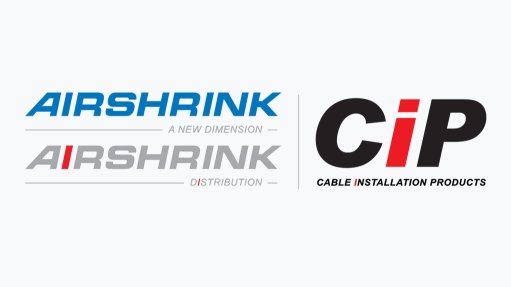SANEDI releases first technical assessment towards Clean Coal Roadmap
A new report from government organisation the South African National Energy Development Institute (SANEDI) on clean coal technologies has presented a case for potential opportunities as well as the challenges associated with adopting these in a roadmap towards 2030.
The report constitutes Phase 1 in a roadmap towards providing an overview of the current energy carbon landscape in South Africa, the fossil fuel value chains and a high-level qualitative approach to ranking various technologies, SANEDI explains.
This is followed by a discussion of the various value chain options and issues emanating from technology assessments.
A number of countries, including South Africa, are set to have coal in their energy systems after 2050 owing to the lifespans of the newer coal-fired power stations, SANEDI points out.
The report assesses the feasibility of South Africa introducing technologies to stay carbon neutral when residual anthropogenic carbon remains in the system post-2050.
This phase of the work by SANEDI provides three high-level technology roadmaps, mainly for power generation, liquid fuels manufacturing and transport.
“These roadmaps do not dictate technology choice but provide options indicating which technologies are relatively more efficient and their contribution towards greenhouse gas (GHG) emissions reduction,” SANEDI renewables manager Dr Karen Surridge explains.
The report assesses possible pathways to introduce clean coal technology, as well as options for carbon abatement; carbon capture, use and storage (CCUS); and others, at existing or new coal-fired power stations.
“It is clear from the study that CCUS is most definitely an avenue that, if explored, would make a significant contribution to carbon dioxide (CO2) emissions reduction. At present, there are limited coal power plants with carbon capture and storage (CCS), due to the high costs involved.
“Currently, 37 CCS projects are in operation, under construction or in advanced development around the world with a total capacity of 78-million tonnes CO2 a year,” SANEDI outlines, pointing out that this is for all fossil fuel power plants not just coal-fired power stations
It adds that major CCS hubs are located in the US, China, Scandinavia, the UK, Saudi Arabia and the United Arab Emirates.
To introduce such technology, South Africa would need to invest in the pipeline and other infrastructure to process, store and transport CO2 to use it in by-products, thereby creating a closed system in which CO2 is captured, stored and reused, SANEDI outlines.
Various other additional low-carbon technologies, including renewable energies such as wind, solar and biogas, are explored for the South African context.
The pros and cons of each technology are thoroughly examined in the context of South Africa’s opportunities and limitations in potentially scaling the various options. The technologies apply to electricity generation, as well as transport and green hydrogen technology.
The report emphasises that the current transmission and distribution infrastructure capacity is a constraint for alternative energy scaling and needs to be upgraded to support the new generation capacities.
It is estimated that it could take up to eight years to upgrade the transmission and distribution infrastructure and that the environmental-impact assessment (EIA) process is the critical path for these projects.
However, a number of projects piloting low-carbon technologies are getting under way.
The Council for Geoscience is piloting a CCS project by conducting research that aims to identify geological storage formations that would be appropriate for storing CO2, SANEDI notes.
This work is funded by the South African government and the World Bank. The pilot project aims to store 10 000 t of CO2.
The site is located in Leandra, in Mpumalanga, close to the Sasol Secunda plants and consists of a basalt geological structure which needs to be investigated as a suitable CO2 storage environment.
Chemicals company Sasol plans to produce sustainable aviation fuels (SAF), as well as green hydrogen, at its Secunda petrochemical plant using its Fischer-Tropsch process. The production of petrol and diesel can be replaced by SAF, SANEDI says.
Sasol also has the option to replace carbon fuel production with sustainable chemical production. The plan is to supply the OR Tambo International Airport, in Gauteng, with SAF and thereafter the export market, SANEDI informs.
It also mentions that the Council for Scientific and Industrial Research (CSIR) has done extensive modelling around various scenarios of electricity supply and demand and for a variety of energy mixes based on the Integrated Resource Plan 2019.
In all scenarios, coal power with CCS is more costly than other alternatives such as renewable power, SANEDI says.
Coal plants with high-efficiency low-emissions (HELE) technology such as ultra-supercritical plants do perform at higher energy efficiencies (40% plus); however, the additional capital and operational costs of CCS make them less competitive than renewable power, it indicates.
SANEDI highlights that the cost of solar photovoltaic and wind has decreased considerably over the past ten years, with average tariffs having decreased by 80% to 90%, with this trend expected to continue as capacity at scale is developed.
The CSIR has found that there is a role for natural gas in peaking load service – open-cycle gas turbines – to cover the variability of renewable power.
The CSIR does not recommend building baseload gas power – combined-cycle gas turbines – as it is noted to risk lock-in of gas technology.
“The footprint required by renewable power installations is relatively large. However, studies have shown that South Africa is richly endowed with large expanses of land where solar and wind resources are abundant.
“Availability of land is not considered a constraint, though compliance with regulations to use this land must be followed.
“The development of technologies and industries that will reduce GHG emissions is a key focus area worldwide. Additional policies and regulations support the development environment and commercialisation of new technologies and to develop industries. This can be achieved through a variety of means, including tax incentives, carbon taxes, grants, subsidies, investing incentives and equity funding,” SANEDI says.
Article Enquiry
Email Article
Save Article
Feedback
To advertise email advertising@creamermedia.co.za or click here
Comments
Press Office
Announcements
What's On
Subscribe to improve your user experience...
Option 1 (equivalent of R125 a month):
Receive a weekly copy of Creamer Media's Engineering News & Mining Weekly magazine
(print copy for those in South Africa and e-magazine for those outside of South Africa)
Receive daily email newsletters
Access to full search results
Access archive of magazine back copies
Access to Projects in Progress
Access to ONE Research Report of your choice in PDF format
Option 2 (equivalent of R375 a month):
All benefits from Option 1
PLUS
Access to Creamer Media's Research Channel Africa for ALL Research Reports, in PDF format, on various industrial and mining sectors
including Electricity; Water; Energy Transition; Hydrogen; Roads, Rail and Ports; Coal; Gold; Platinum; Battery Metals; etc.
Already a subscriber?
Forgotten your password?
Receive weekly copy of Creamer Media's Engineering News & Mining Weekly magazine (print copy for those in South Africa and e-magazine for those outside of South Africa)
➕
Recieve daily email newsletters
➕
Access to full search results
➕
Access archive of magazine back copies
➕
Access to Projects in Progress
➕
Access to ONE Research Report of your choice in PDF format
RESEARCH CHANNEL AFRICA
R4500 (equivalent of R375 a month)
SUBSCRIBEAll benefits from Option 1
➕
Access to Creamer Media's Research Channel Africa for ALL Research Reports on various industrial and mining sectors, in PDF format, including on:
Electricity
➕
Water
➕
Energy Transition
➕
Hydrogen
➕
Roads, Rail and Ports
➕
Coal
➕
Gold
➕
Platinum
➕
Battery Metals
➕
etc.
Receive all benefits from Option 1 or Option 2 delivered to numerous people at your company
➕
Multiple User names and Passwords for simultaneous log-ins
➕
Intranet integration access to all in your organisation


















